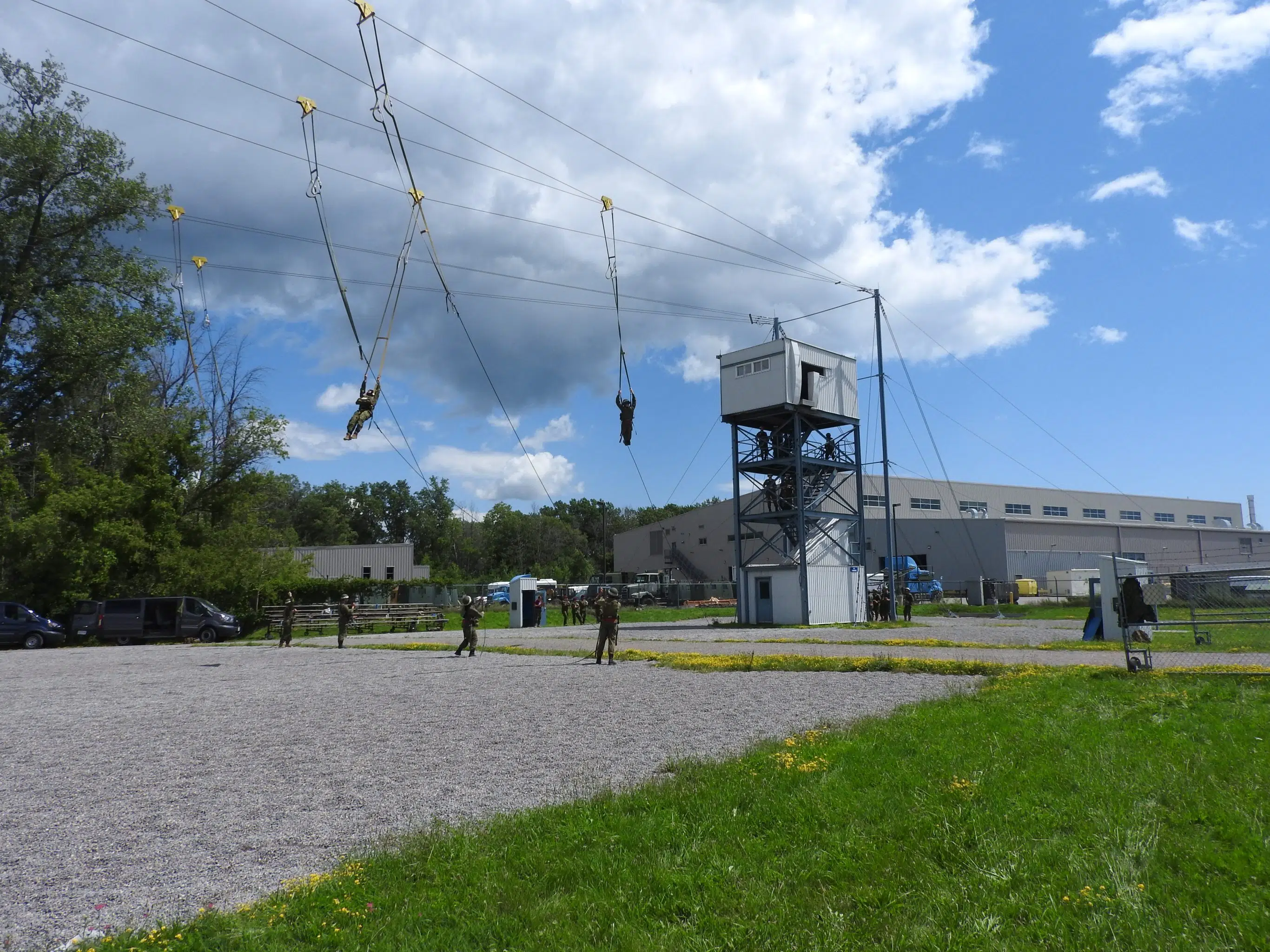A total of 48 senior cadets from across Canada descended to CFB Trenton to take part in the Basic Parachutist Course on Tuesday.
The cadets are selected through a rigourous process before participating in the course.
“They do physical fitness selection and then the morning of the course we do the PT test,” Commander of the Advanced Warfare Centre Jeremie Gauvreau tells media members.
“They have to run the mile or 1.6 kilometres in seven minutes, thirty seconds. They have to do seven chin-ups and 31 sit-ups. That’s the basic test.”
One element of the course was held at the Mock Tower where cadets jump from the tower, simulating a parachutist jumping from a plane and deploying their parachute.
“This is a very important day for the candidates because they have to go through the entire sequence that they’re going to perform in the airplane next week when they’re going to do their jump with a real parachute,” Gauvreau explained.
“So that’s to simulate a jump from the aircraft and they have to perform that drill perfectly. The instructors are looking at it and they are assessing the candidates and that’s part of the process of the course.”

Senior cadets hopping off the bus and heading to the Mock Tower for the next phase of their Basic Parachutist Course, August 1, 2023. (Photo: Zach McGibbon/Quinte News)
The tower is exactly 33 feet tall which Gauvreau says is the point where fear of heights could affect you the most.
“We have people that are very afraid of heights but they overcome that fear when they jump from the tower,” Gauvreau said.
“When you’re locked in, sometimes it’s easier but it’s not for everybody. We have candidates that didn’t go through it and they were not able to jump because of fear of it.”
For Hamza Abdullahi, an Ottawa, Ontario native, it’s something that he has wanted to take part in from a young age.
“As an 11-year-old, I was a part of the Navy League program, which is a sister program to the Sea Cadet program,” Abdullahi explained to Quinte News.
“So in that program I interacted with with a lot of cadets, a lot of senior cadets, specifically cadets who had their basic parachute swings. So, always with those role models, I kind of grew up around them and I aspired towards that.”
Going into the program, Abdullahi says he heard a lot of talk about the course but was ready to go.
“It’s definitely a very mentally and physically demanding course,” Abdullahi said.
“There’s certainly a lot of hype, even outside of the course people who are aspiring to even apply for the course.”

Hamza Abdullahi, an Ottawa, Ontario native part of the Army Cadet program, taking part in the Basic Parachutist Course at CFB Trenton. August 1, 2023. (Photo: Zach McGibbon/Quinte News)
Cadets are taught how to properly exit the tower and proper body positioning, to simulate the feeling of jumping out of an aircraft as much as possible.
“They need to have a strong body position, strong and tight position bending at least 45 degrees from the waist,” Warrant Officer Matthieu Blanchet tells media members.
“Feet need to be together to make sure they don’t, when they get into that relative wind, they don’t start spinning around and have complications when they’re to open (the parachute).”
Cadets can be heard counting “1000, 2000, 3000, 4000” while holding on to the reserve of their gear as they descend from the tower before grasping their hands on the harness to simulate a parachute opening up.
“The following count is the time in seconds that we have from the moment we leave the aircraft to the full support of the canopy, and fully deployed,” Warrant Officer Matthieu Blanchet tells media members.

Cadets jumping out of the 33 ft. Mock Tower as part of the Basic Parachutist Course, August 1, 2023. (Photo: Zach McGibbon/Quinte News)
Other parts of the course include a final summative evaluation that involves successfully completing five individual exits from an aircraft.






